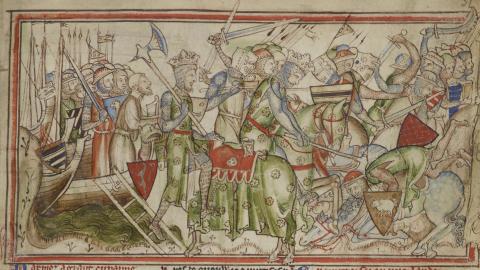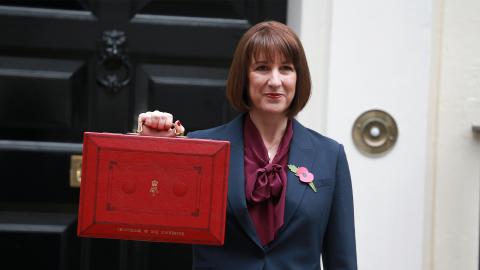
The Spanish Armada: 5 facts about Tudor England's biggest naval victory
Elizabeth I and the Spanish Armada; the Apothecaries painting | Wikimedia | Public Domain
In the summer of 1588 war was brewing in the English Channel. Rising tensions between nations, churches, and monarchs reached a fever pitch when the Spanish Armada set sail destined for England. In late May the Armada set sail from Lisbon with the intention of stopping in Flanders and collecting an army ready for the invasion of England.
If you studied the Tudor dynasty at school then there’s a good chance that you’ve heard all about the English victory against the Spanish Armada. There is a good chance, however, that some of the more intriguing and surprising facts were left out of your history lessons. Here are five facts about the Spanish Armada that you might not have known.
1. It all started with Henry and Anne
When Henry VIII annulled his marriage to his first wife, Catherine of Aragon, it set in motion a series of events that led to rising tensions between England and the continent. The rise in Lutheranism across Europe, along with the English reformation, had the Catholic Church on edge. With his marriage to Anne Boleyn considered illegitimate, their daughter Elizabeth’s claim to the English throne was under constant scrutiny.
When Henry died and his daughter Mary ascended the throne, England returned to the Catholic church and relations with neighbouring countries improved. Mary’s marriage to Prince Phillip II of Spain had expectations of an heir to both the Spanish and English throne at an all-time high. When Mary died without having had any children, and Elizabeth I returned England to protestant rule, the Vatican were eager to place a Catholic ruler back on the throne of England.
2. Pirates and plunderers
You might be forgiven, with the Vatican’s heavy involvement, that the Spanish Armada was a war of religion, however that wasn’t quite the case. Although there were many challenges to Elizabeth’s legitimacy, it was something a little more material that motivated Spain to go to war: money.
With riches of the Americas providing a new and exciting source of wealth to Spain, there was ample opportunity for those who were looking to profit off of the new trade routes. Spain saw England as their main competitor for the colonisation of America and the expanding trade routes that the New World would bring.
Privateers and pirates roamed the waters waiting for Spanish ships laden with tobacco, gold, and other imports from the ‘New World’. Elizabeth’s apparent reticence to punish those preying on Spanish ships, along with her execution of Mary Queen of Scots (a catholic who had a stronger claim to the throne than Elizabeth), Spain had had enough.
3. It wasn’t a last-minute declaration of war
King Phillip II had been planning the invasion of England since 1586, however it took over two years to execute. Plans were hindered further by Sir Francis Drake’s sacking of 30 Spanish ships in the port of Cadiz. Despite the growing tensions between the two countries, Phillip knew that a full-scale invasion of England wouldn’t be easy. With the backing of the Vatican, who saw the invasion as a crusade for the Holy Roman Empire, Phillip was able to collect higher taxes to fund his preparations.
4. England had the bigger Navy, but Spain had more firepower
Despite all the planning, England still had more ships than Spain. Having ruled alongside Elizabeth’s sister Mary before her death, Phillip had spent his time in the English court strengthening the navy. He knew that they would have the greater numbers, however Spain had a hidden trick up their sleeve: firepower. Though fewer in number, the Spanish ships had double the fire power of the British.
5. The forgotten English Armada
The following year England launched a Counter Armada in retaliation against Spain. In the hopes to catch Spain at a time of naval weakness and force Phillip’s hand, England launched an attack. With the intention of pushing Spain to agree to peace, the English Armada was a catastrophic failure. England had to withdraw due to heavy losses, and Spain’s naval power was unrivalled for years to come. Two more armadas were launched by Spain in the following years, however both were scattered by storms before they could see any military action. Peace was finally agreed between Spain and England in 1604.


















